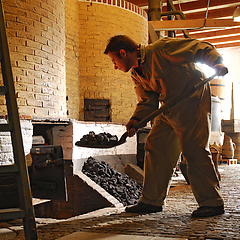A stoetboom (bread tree) is a branch which was originally baked with white bread rolls around it. Stoeten, white rolls, were only eaten at heydays in the past, and they were a delicacy. On the first day at school after the summer holiday the pupils who are new at the school receive a stoetboom. Nowadays soft rolls and currant buns in plastic bags are hung in such a branch and treats, fruit or small gadgets too. They are often decorated with garlands as well. The story that the children were told while the stoetbomen were/are handed out was/is: in the school attic, above the headmaster’s classroom, a stoetboom grows and its branches broke off during a storm. Then the pupils of the highest classes start to stamp their feet on the attic floor, thus imitating the falling of branches. The broken-off branches of the stoetboom are subsequently, in the presence of parents and grandparents, handed out to the new pupils of the school. Afterwards the branches are taken home, where they are supposed to stand until all the treats are gone.



